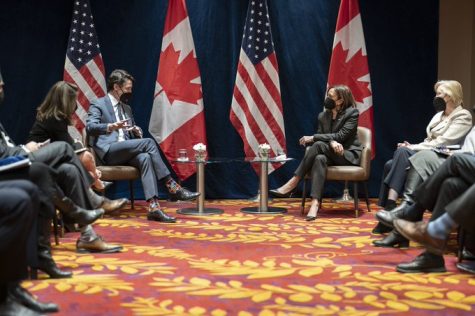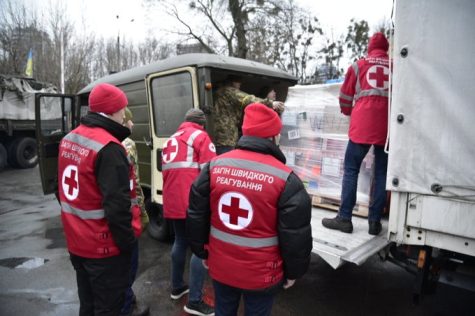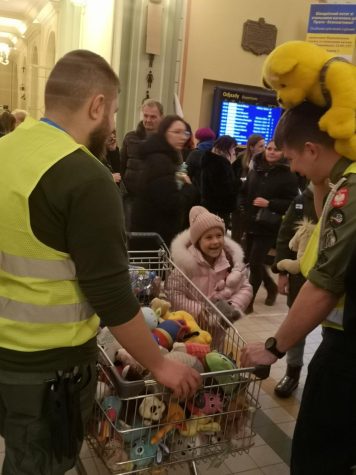What Students Need to Know About the Russia-Ukraine War
March 17, 2022
Nearing the fourth week of Russia’s invasion of Ukraine, here is what students need to know about the events of the past few weeks and their causes and effects.
But to understand why this is happening, we have to look at the history of this conflict.
According to NPR, Ukraine gained its independence with the fall of the Soviet Union in 1991.
Sandboxx stated that in the 30 years since that event, the two countries have continued to face friction with one another.
Despite its long-established independence, Russian president Vladimir Putin still views Ukraine as Russian territory.
According to NPR, Russia violated the agreement to respect this independence in 2014 when they illegally took control of Ukraine’s Crimean Peninsula.
This is primarily because Russia views Ukraine as protection between them and NATO countries, so Ukraine’s aim to join the group has been viewed by Putin as a threat to Russia’s security, according to Sandboxx, an organization that allows people to support recruits in training.
NPR explained that in April of 2021, 100,000 Russian troops were stationed at Ukraine’s borders. Although they claimed to remove their troops later that month, tens of thousands remained there.
Tensions continued to level, and on Jan. 23 of this year, U.S. embassy families in Ukraine were ordered to leave.
On Feb. 10, 30,000 Russian and Belarus troops stationed on Ukraine’s borders began doing military exercises. This number of troops rose to at least 150,000 in the next couple of weeks.
The U.S. and the UK also began deploying troops and encouraging their citizens to evacuate the area.

Then, on Feb. 24, Russia initiated its detrimental invasion of Ukraine.
According to Al Jazeera, a Middle Eastern news site, Russia has caused major chaos and destruction in Ukraine since its invasion. Troops have invaded several major cities and destroyed hospitals and airports, forced their way into government buildings and much more.
On March 6, Russia increased its shelling of the major Ukrainian cities- Kharkiv, Mykolaiv, Mariupol and the outskirts of the capital, Kyiv.
Meanwhile, many countries have phased out their reliance on Russian products, primarily natural gas.
The U.S. has sanctioned its gas supply from Russia, which previously made up for approximately 13 percent of the country’s supply.
Many European countries are also taking steps to reduce reliance on Russia’s gas, but their dependence is much greater than America’s.
However, the European Commission has promised to reduce its Russian oil consumption by two-thirds by the end of the year.
According to NPR, as of March 14, Russia and Ukraine have had four talks without any breakthroughs.
The U.S. has been warning China not to assist Russia, and State Department spokesman Ned Price spoke on the issue during their meeting, according to a March 14 piece by the NPR Staff.
“Any such country that would seek to attempt to bail Russia out of this economic, financial morass will be met with consequences,” Price said.
NATO has been giving its continued support to Ukraine through this invasion.

According to the Red Cross, affected citizens in Ukraine and surrounding areas have found themselves in desperate need of food, water, shelter and medical care.
Birgitte Bischoff Ebbesen, International Federation of Red Cross and Red Crescent Societies (IFRC) Regional Director for Europe, recently spoke on the crisis.
“Many of the people affected were already vulnerable before the conflict and now face an even harsher situation as they are losing their homes and their livelihoods,” Ebbesen said.
The Ukrainian Red Cross has been working tirelessly to provide aid to those affected by the invasion.
According to the Red Cross, more than 32 tons of food, medical supplies, blankets and household items have been distributed, 12,000 people in metro stations and bomb shelters have received first aid training, people with disabilities are being evacuated and critical items have been distributed to more than 7,000 people in bomb shelters.

Over 2 million people have been able to flee Ukraine and seek refuge in other European nations.
The Red Cross and Red Crescent are supporting displaced people in Poland, Hungary, Moldova, Belarus, Romania, Russia, Slovakia, Lithuania, Bosnia and Herzegovina.
They are providing assistance and comfort to children as well as psychosocial support for those who need it.
The American Red Cross has also sent out international crisis responders to several European countries for assistance.
The Red Cross will focus on reuniting families, distributing supplies and providing awareness about contaminated areas over the next several weeks.
However, Ukrainians and millions of displaced people are still in need of help.
The Aevidum and the multicultural club are collecting products, such as baby products, children’s clothes, blankers, hygiene products, etc., to be shipped to the Ukraine.
All of the supplies will be sent to Ukraine through the Ukrainian American Relief Committee in Philadelphia.
They are collecting items until Friday, March 25, and all items can be taken to social studies teacher Kevin Lawrence’s room, 208.
To learn other ways to make a direct impact, read this article by NPR for a list of organizations to donate to.